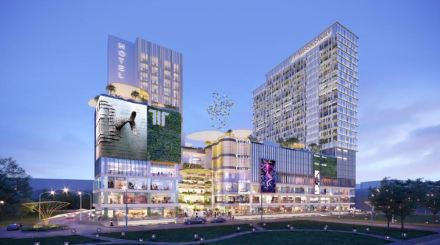Mall operators are expected to clock a healthy revenue growth of 10-12 per cent this fiscal, building on last fiscal’s 15 per cent spurt, stated a report by CRISIL Ratings. The growth, it added, will ride on contractual rental escalations, improvement in overall occupancy due to ramp-up of the malls launched in last two fiscals, the full-year impact of malls launched during last fiscal, and an increase in share of tenant revenues supported by consumption growth, among other factors.
CRISIL Ratings analysed 32 Grade A malls to release the findings. Per the report, the steady rental income and comfortable balance sheets will keep credit profiles stable.
For the current fiscal, mall operators will prioritise maximising occupancy in malls commissioned over the past two years as ongoing under-construction projects are at a nascent stage.
Gautam Shahi, Director, CRISIL Ratings, said, “Overall occupancy for malls is expected to increase to 92-93 per cent this fiscal from 89 per cent last fiscal. This will be driven by a surge in occupancy for malls that were launched in the last two fiscals, while occupancy for established malls will remain stable at ~95 per cent, with timely renewals. This, along with full-year impact of the newly launched malls, steady rental escalations of 4-5 per cent and moderate retail consumption growth, will drive revenue growth for mall operators to 10-12 per cent this fiscal.”
CRISIL said that the retail consumption growth of these malls is expected to moderate to 3-5 per cent in the first half of this fiscal, in comparison to 12.5 per cent in the corresponding period last fiscal, due to high base effect and heat wave. In that, tier-I cities have seen higher moderation than tier-II cities. Further, consumption is likely to pick up in the second half of this fiscal, with an above normal monsoon and the festive and wedding season partly offsetting the lower growth in the first half.
That said, the impact on the mall operators will be limited as revenue sharing accounts for only 10-15 per cent of total revenue.
Meanwhile, mall operators have maintained their operating efficiency, with Ebitda margin holding firm around 70 per cent over the past few years and expected to sustain at a similar level this fiscal. Debt levels remain under control despite addition of new assets to the portfolio as cash accruals are expected to be sufficient to fund the ongoing capital expenditure plans of around 2-3 million square feet (msf), which are expected to operationalise over the next 2-3 years.
Snehil Shukla, Associate Director, CRISIL Ratings, said, “Healthy operating performance, underpinned by rising occupancy and anticipated rental growth, will help improve the debt-to-Ebitda ratio to 2.6-2.8 times by the end of this fiscal from 2.9 times last fiscal. The debt service coverage ratio is also expected to remain strong, at 2.2 times, compared with 2.3 times last fiscal.”
That said, CRISIL said that any large debt-funded acquisitions by mall operators will bear watching.
